Project Based Learning: Six teacher-led projects that develop 21st century skills
- admin's Blog
- Log in or register to post comments
Abstract
This article follows the progress of facilitators trained by Yuva Chintana Foundation (YCF) as they prepare for a teacher-led, activity-based module of the STEM for Girls programme launched by IBM India Pvt Ltd and Quest Alliance, which YCF is spearheading in Karnataka. Each project responds to the unique societal circumstances within which these schools are located. Alongside syllabus-specific skills such as reading, writing, speaking, etc, facilitators were challenged to design projects that developed 21st century skills such as critical thinking, computational thinking, problem solving, social awareness, etc. All the projects are inter-disciplinary in nature and encourage students to actively engage with their communities.
About STEM for Girls
STEM for Girls is a three-year programme consisting of modules designed to build 21st century skills namely communication skills, confidence, self-awareness & critical thinking and digital fluency & problem-solving skills amongst school-going children, predominantly girls.
Introduction
The demands of a rapidly changing society have placed a lot of pressure on schools to adapt their pedagogy almost overnight. From placing an emphasis on learning and reproducing information and facts, schools are now expected to provide opportunities to students to learn from experiences and engage with real problems that they see and observe around them in order to develop what are known as 21st century skills. This emerging trend has thrown a lot of schools into confusion with many of them blindly adopting new technologies and adding subjects such as robotics and programming to an already course-heavy curriculum. In an oblique reference to this phenomenon, in 2018 the Ministry of Human Resource Development directed schools to place limits on the weight of school bags that students carry. In 2020, the department of school education and literacy has gone a step further and created a Policy on School Bag. However, for a vast majority of schools in India, experiential learning or active learning or project-based learning (PBL) continues to remain an elusive proposition possibly because they are stretched for resources and they perceive this endeavour to be expensive or maybe it’s because their teachers don’t have time to do anything extracurricular or aren’t trained for such out-of-the-box thinking. For schools in smaller towns that are trying to prevent students from dropping out, such an approach to education appears unattainable even if it might potentially offer a solution to their problem. Few teachers know how to fully harness the interdisciplinary nature of a project-based approach to learning or how to use technology to solve problems instead of teaching students how to use technology just to be a passive consumer of content.
The Vatara Shaale experiment
Vatara Shaale are community schools in Karnataka that were created to fill the vacuum in education caused by the COVID-19 pandemic. They have begun to emerge as alternative spaces for learning where the boundaries between community and school are blurred. YCF has identified these Shaales as the perfect space for the implementation of its commitment to the STEM for Girls programme. These are unique as they offer both teachers and students a chance to step out of the roles they perform in the traditional classroom and engage with each other in more meaningful ways.
One important area, identified by YCF, in which these Shaales can be harnessed to offer education that is a clear departure from existing forms of learning in the schools of that region, is in the area of PBL. To be able to offer their students experiential learning is a luxury most teachers, burdened by the rigors of current school curricula, cannot afford. The Vatara Shaale exists outside the bounds of traditional schools as their curriculum is dictated by the facilitator in charge of the session that the student is attending. YCF has been working with its teachers to develop projects that can be implemented in the community.
The Process
Facilitators from YCF have been in regular contact with their students conducting online meetings and workshops to check on their progress as well as to offer guidance on the way forward. YCF leadership also conducts regular field visits to attend important events organised by their facilitators and to conduct discussions with local government officials and school leaders in order to build a case for the continuation of the community experiment.
The different stages of this training exercise are as follows:
Step 1: Identifying an area of interest
YCF mentors asked facilitators to identify an area of interest. They were encouraged to look for ideas from the communities they hailed from by talking to people. The mentors checked in with the teachers on a weekly basis offering encouragement and guidance to help them narrow the focus of the learning outcomes they wanted to achieve with their projects.
Step 2: PBL Planner
In order to help their facilitators ask the right questions, mentors provided them with a rubric that plotted each stage of the project in the form of milestones. This helped facilitators plan their way towards their intended learning outcome while also keeping track of the overarching skills they intended to develop through the entire project. At each milestone, facilitators were encouraged to think of a key question they wanted to ask their students as well as the intended outcome of that particular step that they would review to ensure the project was progressing the way it was meant to. Once they completed this, they were encouraged to map out a daily plan for their project in a calendar.
Step 3: Live Presentations
The final stage of this process was an online meeting with all the facilitators in which they were asked to make a presentation of their projects with real life applications. In total, 20 teachers attended this meeting of which six projects have been described in this article. After their presentations facilitators were given constructive feedback so they could develop their ideas further.
The Projects
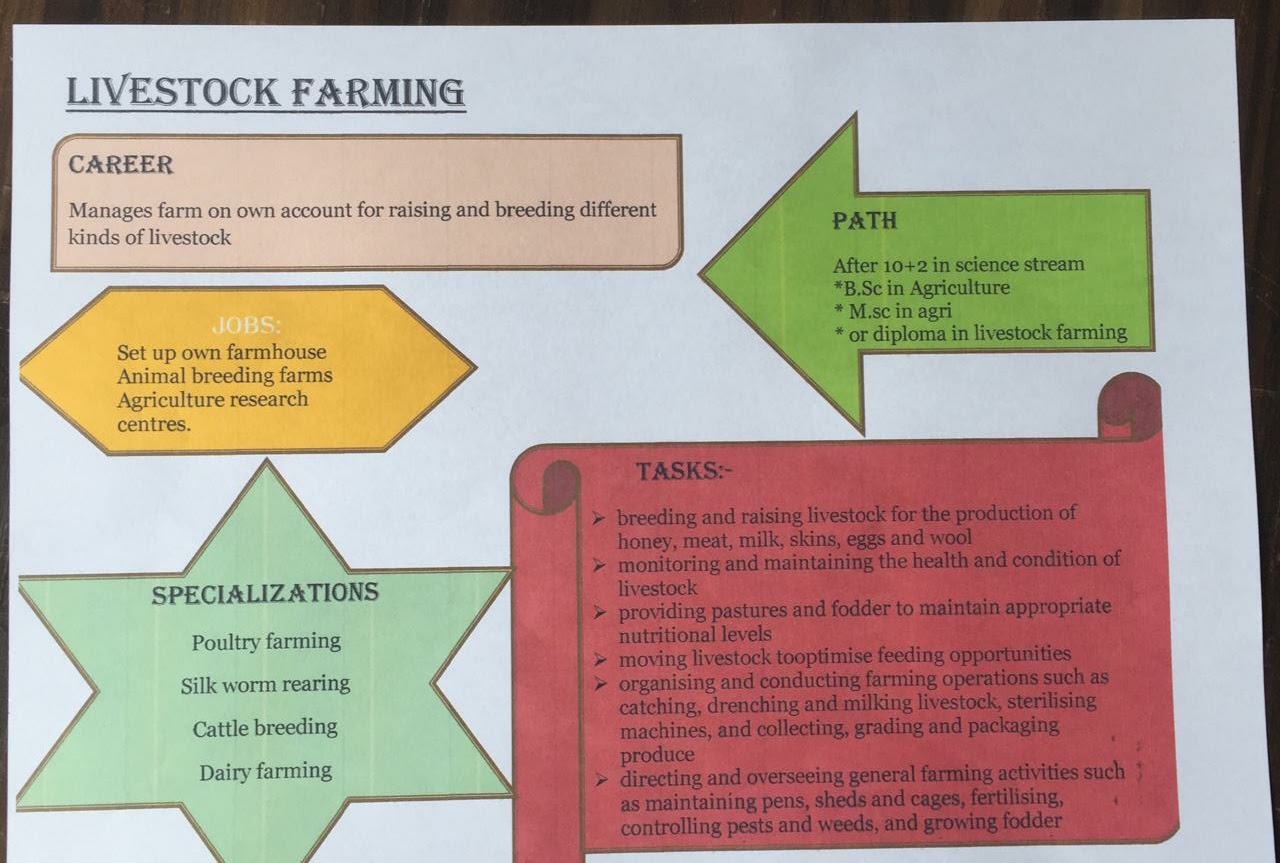
Career Cards
Kavya Manjunath, Chitradurga
For her project, Kavya wanted to empower children with information about all the various career options available to them in their region (Chitradurga). “I found that one of the biggest challenges faced by school students is their lack of motivation towards their studies owing to an overwhelming feeling that they will never be able to work in a job that they like because they don’t have many options in their region. I have several examples in my own home of how this feeling of dejection can hinder your dreams.” Her solution was to work with her students to prepare what she calls “career cards”. She has meticulously charted out the various stages of the project beginning with 1) identifying and collecting information about the various jobs in Chitradurga, 2) talking to friends and family about their work and about what they know about work in the region in general and 3) identifying companies in the region and the kind of job openings they have. Mining and agriculture including rearing livestock and farming are the predominant occupations in the region. “Armed with all this information, students won’t be misled or misguided. They will know what they need to do to get the jobs available to them. This will make them confident,” says Kavya. Furthermore, once students identify a career they are interested in they can also identify specific courses that will help them develop their skills and eventually advance their career prospects. Kavya intends for students to have a hard copy of all this information so that they can refer to it whenever they need to.
Facilitator take-away: Feelings of helplessness and dejection often come from not having a complete picture of a particular situation.
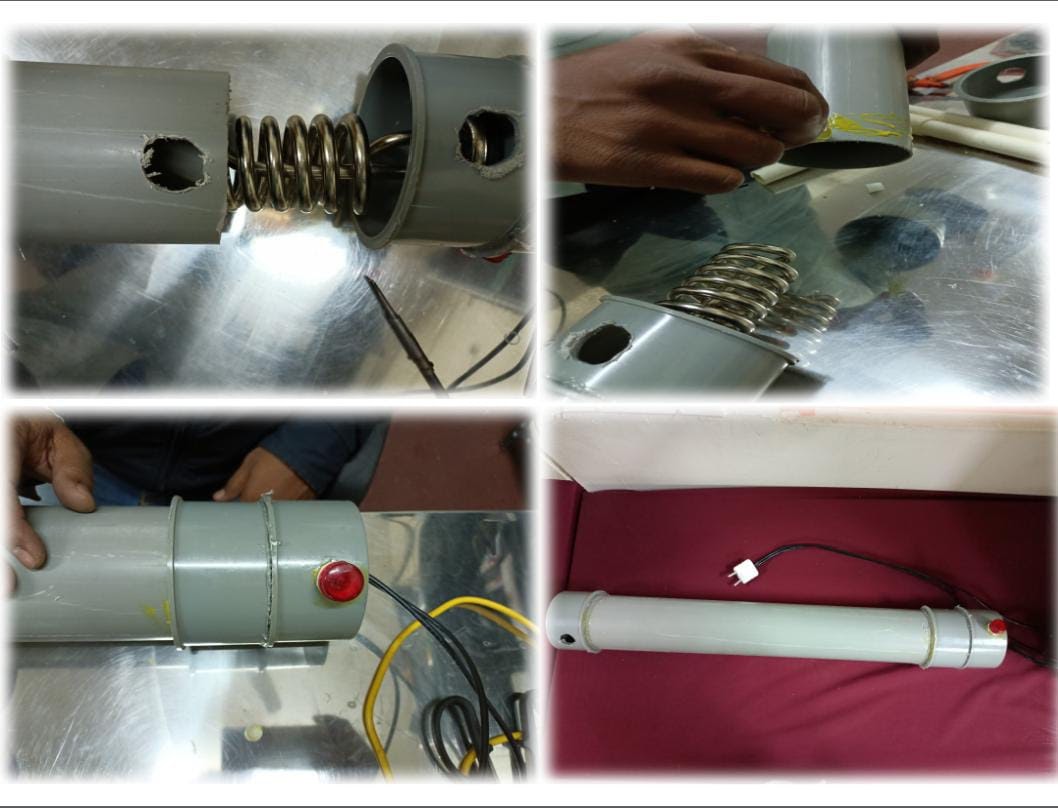
Shrikanth Chavan, Yadgir
For Shrikanth, the motivation to create a simple water heater arose from discussions with community members. “People over here (Yadgir) use firewood to heat their water. This produces a lot of smoke and inhaling this smoke is quite unhealthy,” says Shrikanth. Using PVC pipes and simple circuitry, Shrikanth has designed a working water heater that costs a little over Rs.1000 “It was very important to make a device that was fast, safe and inexpensive so as to be of any use to the people here.” Through his project Shrikanth wants to make students realise that 1) they can apply what they learn in the classroom to real-life problems, 2) they should never accept a situation for what it is without questioning and understanding it better, 3) all invention comes from trial and error and they should not give up and 4) there are a lot of resources available to them online to build and create things.
Facilitator take-away: The challenge of inventing something new offers an exciting opportunity for learning.
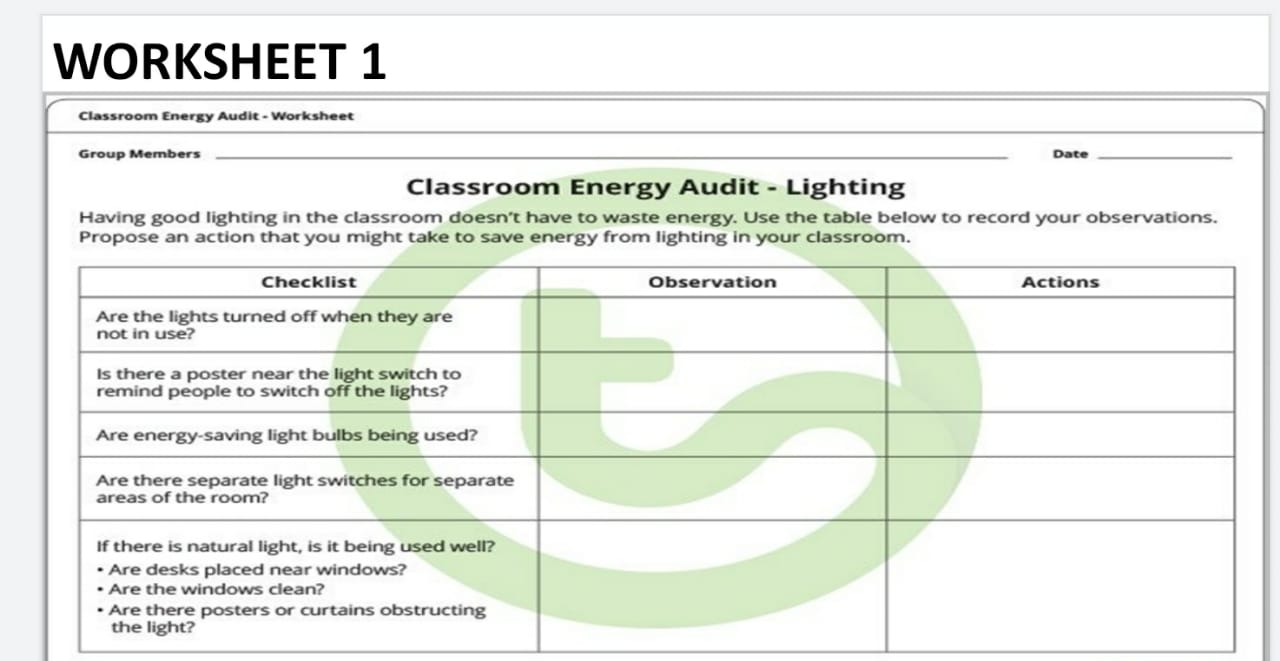
Electric Energy Audit
Anusha Basavaraju, Bangalore Rural
“Did you know that 65 percent of the thermal energy generated by power plants gets wasted,” says Anusha as she begins her presentation. “Not to mention the carbon-di-oxide that gets released into the atmosphere.” For her project, Anusha wants to teach her students about sustainability, energy conservation, energy efficiency and the basics of an energy audit. She plans to begin this process by getting students to analyse different types of electricity bills; from their residence, school, farm, etc. “Students will learn about the different tariffs that are applied to different bills. For example, commercial structures are billed at a higher rate than residential areas but if women are getting together to start a small business from their home then they are eligible for a subsidy.” Anusha will encourage her students to understand how different appliances consume electricity and visit their local electricity distribution centre and interview the government officials there (allowing them to address people in positions of authority and ask them questions) to understand how electricity is billed, about load and sanctioned load, about minimum energy fixed charge, etc. Following this she expects her students to make a presentation to their class about what steps they can take to be more energy efficient in their own lives. “I also want them to conduct a campaign in their community about energy conservation. There is a big difference between energy efficiency and conservation and I want to make sure students understand this difference.”
Facilitator take-away: Larger issues of sustainability are closely linked to the ways in which we live our lives as individuals.
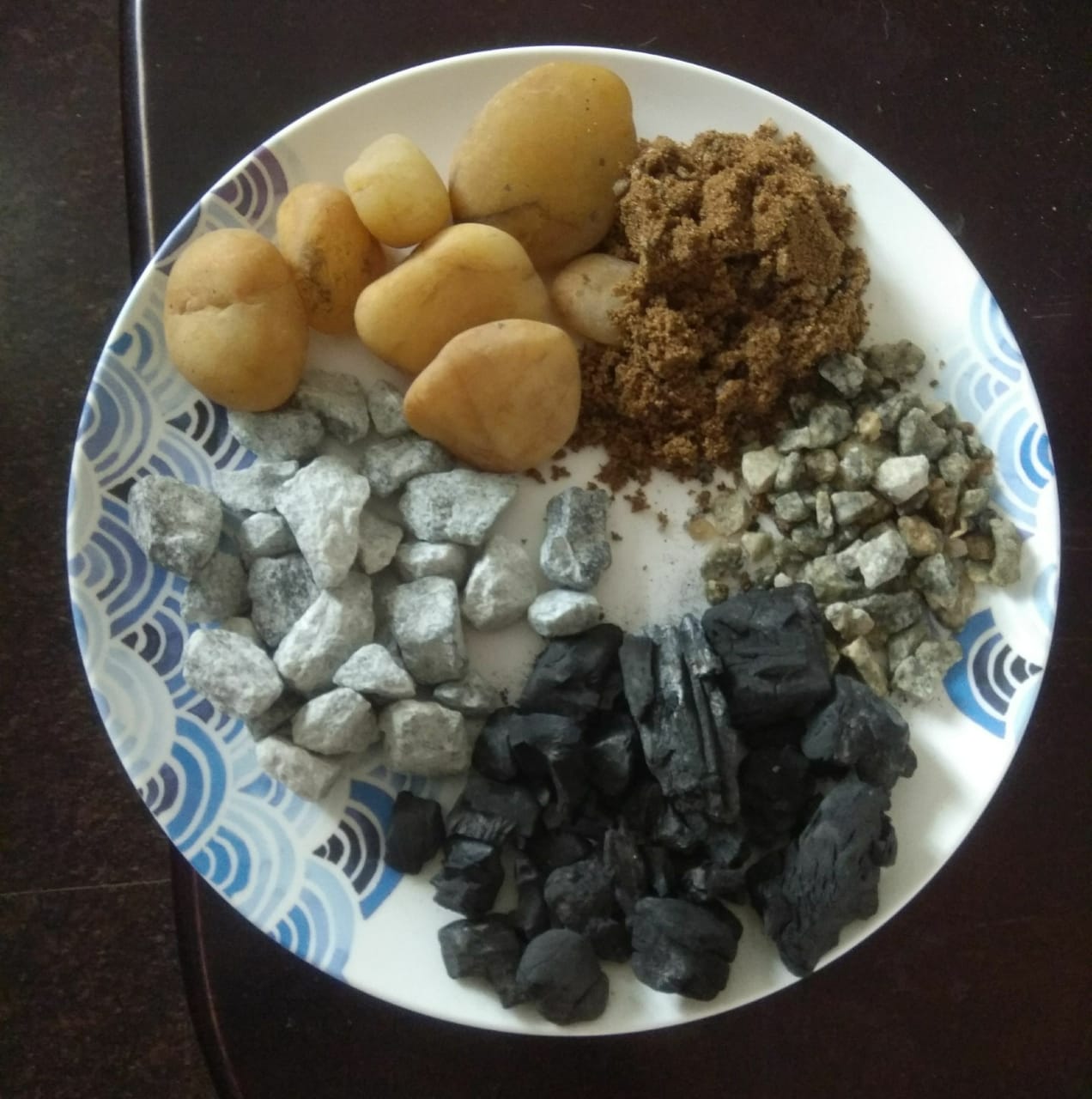
Water Purifier
Sankranthi S Tilak, Chitradurga
Sankranthi’s project is connected to an incident that occurred in Hiriyur, a region close to hers. All the people there developed yellow teeth that didn’t get better no matter how much they tried to clean them. Their water was polluted. “I want to root my project in this incident and talk to my students about water pollution and how and why it occurs. We will be constructing a water purifier consisting of layers of rocks, sand and activated charcoal.” Sankranthi then did a small live demonstration of the device she had constructed. She measured the level of particulates in the water before and after purification using a TDS meter (Total Dissolved Salts) and there was a significant difference in value—209ppm (parts per million) prior to purification dropped to 116ppm post purification. In addition to being an interesting science experiment, this project is interdisciplinary in nature because it allows students to 1) learn about local history, 2) understand the chemical properties of the materials they are using and 3) understand the biology of our body and how different pollutants affect it.
Facilitator take-away: Learning any subject becomes more interesting when it is rooted within a context that we identify with.
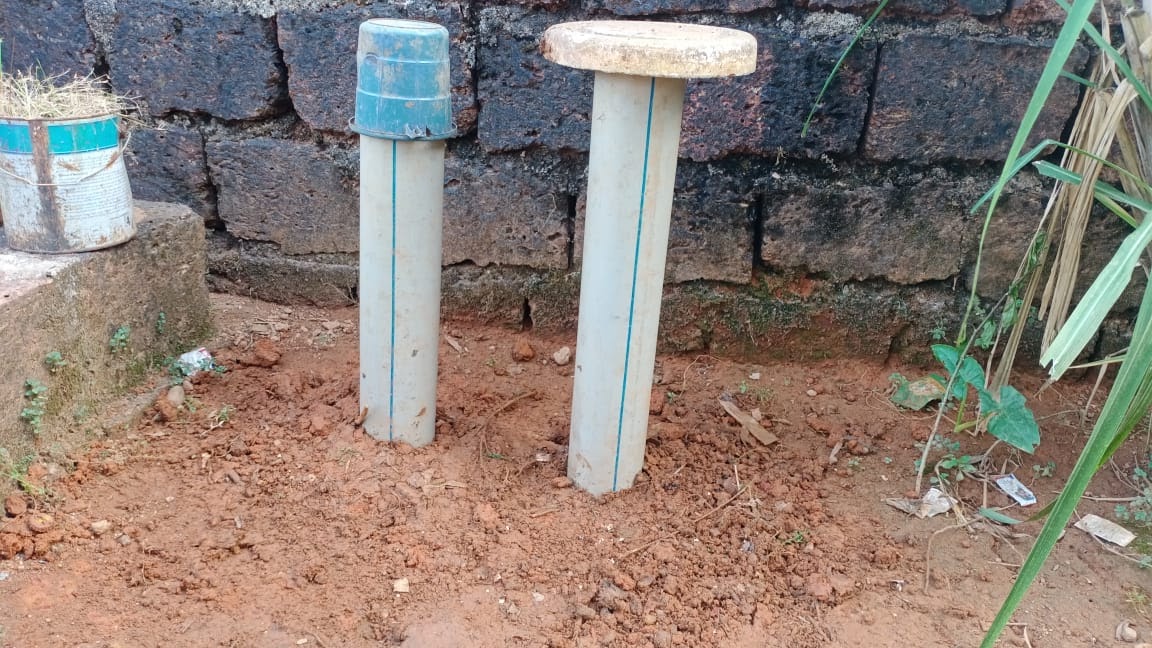
Pipe Composter
Shrikanth Poojary, Dakshin Kannada
Shrikanth’s project arose from a need to do something about the waste disposal problem in his community. “Garbage doesn’t get collected for many days and this creates a health hazard for everyone living there. If every household composted their kitchen waste, it would solve this problem.” His design is fairly simple. He dug two 30cm tall pits in the ground and placed PVC pipes in both of them. Both the pipes were bored with multiple holes and covered. Kitchen waste mixed with soil was then put into the pipe. Pipe composting is a form of vermicomposting also known as worm tube composting. Through this project Shrikanth wants to initiate discussions on biodegradable and non-biodegradable waste, methods of composting, soil health, etc.
Facilitator take-away: Sustainable ways of living offer solutions to multiple problems faced by society.
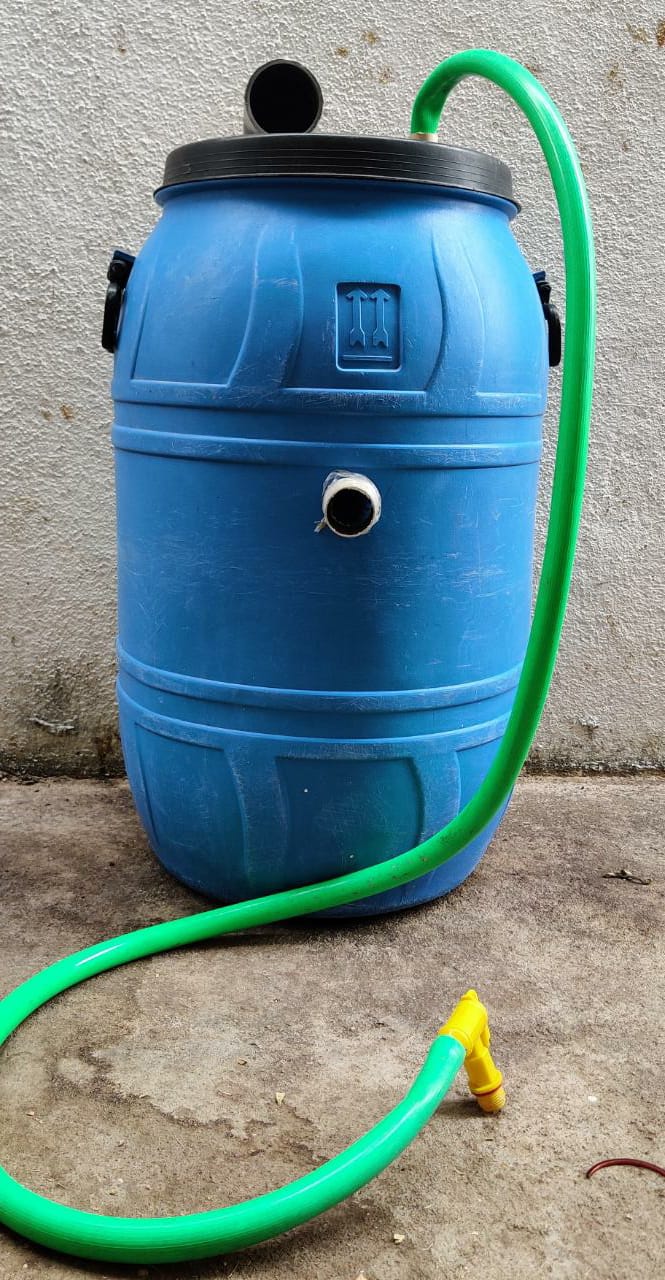
Bio Gas Unit
Mukta, Chikkamagalur
Similar to Shrikanth’s project, Mukta wanted to find a way to solve waste disposal problems in her area. She decided to try and harness the methane produced by decomposed kitchen waste for cooking purposes. Her bio-gas unit is constructed out of a blue plastic drum, which acts as the digestor of the waste. Bio-gas is a product of anaerobic composting. This means that the waste is not ventilated. “Kitchen waste is put into the digester in the form of a slurry. There is one inlet tube and two outlet tubes: one for decomposed, liquid manure and one for gas,” says Mukta who is still ironing out the details of her device. “I haven’t been able to produce much gas but I hope to do so soon. I am making a few corrections to my design,” she says. This is an important aspect of PBL. When you learn by doing, you often encounter obstacles that you need to creatively overcome. It is this process that allows children a chance to be inventive and seek out answers for themselves.
Facilitator take-away: Learning is a process that is independent of its outcome.
Insights
Educating students to be citizens of a world in which a lot of emphasis is placed on their ability to bring fresh perspectives to emerging problems is not an easy task. It treads a fine line between developing the daily rigor that it takes to master difficult subjects as well as the creative freedom to ask uncomfortable questions. As is evidenced by the efforts made by these facilitators, PBL naturally integrates a number of educational objectives that are needed to develop 21st century skills such as critical thinking, problem solving, self-confidence and social awareness. PBL does not necessarily have to be resource intensive; the only resource a teacher/ facilitator needs is time to plan his/her activity and execute it. Most importantly, in the DIY age that we live in, where we have access to so many tutorials and we are so aware of the wonderful experiments in education being tried across the world, PBL gives both teachers and students a chance to be creative and to enjoy the process of learning and teaching. In a way, thanks to the pandemic break, YCF facilitators were guided through this wonderful opportunity to work on live projects themselves, which would not have been possible during regular school hours. These projects are evidence that such PBL initiatives have the potential to transform approaches to learning in the country and need to be exercised diligently in facilitators and while capacity building for in-school teachers.
